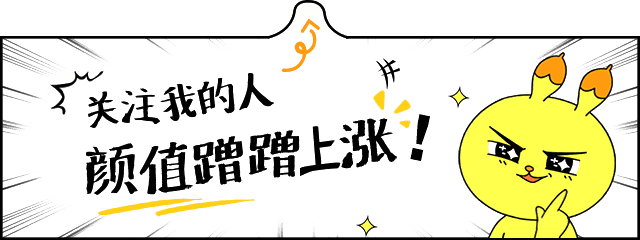再说 this 指向问题

要知道 this 指向问题,需要知道函数调用栈,函数调用的位置。
先来看看以下这个例子:
function baz() {
// 当前调用栈:baz
// 因此,当前调用位置是全局作用域
console.log("baz")
bar(); // bar 的调用位置
}
function bar() {
// 当前调用栈是 baz -> bar
// 因此,当前调用位置在 baz
console.log("bar")
foo(); // foo 调用位置
}
function foo() {
// 当前调用栈是 baz -> bar -> foo
// 因此,当前调用位置在 bar 中
console.log("foo")
}
baz() // baz 的调用位置
绑定规则
独立函数调用
function foo() {
console.log(this.a)
}
var a = 10
foo() // 10
在本例子中 this 默认指向了 window 全局对象
为什么呢?
因为,函数调用时不带其他修饰的函数调用,使用默认绑定 this 到全局 window 对象上。
隐式绑定
非严格模式下,函数调用 this 指向调用者。
function foo() {
console.log( this.a );
}
var obj = {
a: 2,
foo: foo
};
obj.foo(); // 2
隐式丢失
把 this 绑定到全局对象或者 undefined 上,取决于是否是严格模式。
function foo() {
console.log( this.a );
}
var obj = {
a: 2,
foo: foo
};
var bar = obj.foo; // 函数别名!
var a = "oops, global"; // a 是全局对象的属性
bar(); // "oops, global" 调用的位置是在全局对象上的,所以 this 指向了 window
一种更微妙、更常见并且更出乎意料的情况发生在传入回调函数时:
function foo() {
console.log( this.a );
}
function doFoo(fn) {
// fn 其实引用的是 foo
fn(); // <-- 调用位置!
}
var obj = {
a: 2,
foo: foo
};
var a = "oops, global"; // a 是全局对象的属性
doFoo( obj.foo ); // "oops, global" 实际上 this 也是指向 window 的
将函数传入内置函数呢:
function foo() {
console.log( this.a );
}
var obj = {
a:2,
foo:foo
}
var a = "oops, global"; // a 是全局对象上的属性
setTimeout(obj.foo, 100) // "oops, global" 也是指向了 window
显式绑定
使用 call,apply,bind 方式来绑定
function foo() {
console.log( this.a );
}
var obj = {
a:2
};
foo.call( obj ); // 2
上面这种方式就好像下面这样定义,只是换了一种方式
function foo(){
console.log(this.a)
}
var obj = {
a: 2,
foo: foo
}
obj.foo() // 2
如果你传入了一个原始值(字符串类型、布尔类型或者数字类型)来当作 this 的绑定对象,
这个原始值会被转换成它的对象形式(也就是 new String(..)、new Boolean(..) 或者 new Number(..))。这通常被称为“装箱”。
function foo() {
console.log( this.a );
}
var obj = {
a:2
};
foo.call( 2 ); // undefined
硬绑定
function foo() {
console.log( this.a )
}
var obj = {
a:2
}
var bar = function() {
foo.call(obj)
}
bar() // 2
setTimeout(bar, 100) // 2
硬绑定的典型应用场景就是创建一个包裹函数,负责接收参数并返回值:
function foo(something) {
console.log(this.a, something)
return this.a + something
}
var obj = {
a: 2
}
var bar = function() {
return foo.apply(obj, arguments)
}
var b = bar(3) // 2 3
console.log(b) // 5
另一种使用方法是创建一个可以重复使用的辅助函数:
function foo(something) {
console.log( this.a, something );
return this.a + something;
}
// 简单的辅助绑定函数
function bind(fn, obj) {
return function() {
return fn.apply( obj, arguments );
};
}
var obj = {
a:2
};
var bar = bind( foo, obj );
var b = bar( 3 ); // 2 3
console.log( b ); // 5
es6 提供的 bind 方法
function foo(something) {
console.log( this.a, something );
return this.a + something;
}
var obj = {
a: 2
}
var bar = foo.bind(obj)
var b = bar(3) // 2 3
console.log(b) // 5
循环中的 this 绑定
function foo(el) {
console.log(el, this.id)
}
var obj = {
id: "awesome"
}
var arr = [1,2,3]
arr.forEach(foo, obj);
// 1 "awesome"
// 2 "awesome"
// 3 "awesome"
顺便来看看 forEach, map 的核心区分:
function foo(el) {
console.log(el, this.id)
}
var obj = {
id: "awesome"
}
var arr = [1,2,3]
var res = arr.map(foo, obj);
console.log("map===>", res)
var eachRes = arr.forEach(foo, obj)
console.log("each===>", eachRes)
// 1 "awesome"
// 2 "awesome"
// 3 "awesome"
// map===> (3) [undefined, undefined, undefined] // 返回数组
// 1 "awesome"
// 2 "awesome"
// 3 "awesome"
// each===> undefined // 返回undefined
new 操作
使用 new 来调用函数,或者说发生构造函数调用时,会自动执行下面的操作。
创建(或者说构造)一个全新的对象。 这个新对象会被执行 [[Prototype]] 连接。 这个新对象会绑定到函数调用的 this。 如果函数没有返回其他对象,那么 new 表达式中的函数调用会自动返回这个新对象。
以下是我根据上面这个思路实现的代码
function newOP(fn) {
var obj = Object.create(null)
var fnProto = Object.create(fn.__proto__)
obj.__proto__ = fnProto
var res = fn.apply(obj, arguments)
return res ? res : obj
}
this词法
箭头函数在创建的过程就绑定了 this 的指向问题,我们可以考虑以下这个问题:
function foo() {
// 返回一个箭头函数
return (a) => {
//this 继承自 foo()
console.log( this.a );
};
}
var obj1 = {
a:2
};
var obj2 = {
a:3
}
var bar = foo.call(obj1)
bar.call(obj2); // 2 而不是 3
箭头函数最常用于回调函数中,例如事件处理器或者定时器:
function foo() {
setTimeout(() => {
// 这里的 this 在词法上继承自 foo()
console.log( this.a );
},100);
}
var obj = {
a:2
};
foo.call( obj ); // 2
评论
